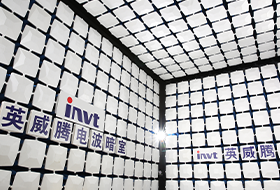How Liquid Immersion Cooling Can Help Data Centers Achieve Net Zero Emissions
Data centers are the backbone of the digital age, powering everything from online shopping to social media. However, this growing demand for computing power comes at a huge environmental cost. Traditional air cooling systems in data centers consume a lot of energy, contributing to greenhouse gas emissions and hindering the goal of net zero emissions. With escalating concerns about climate change and the requirement to achieve net zero emissions within a reasonable time, data center operators need to act urgently.
One way for data centers to reduce their carbon footprint is to invest in effective data cooling solutions. One innovative solution that is quickly gaining popularity in the industry is liquid immersion cooling. Some call it a "green solution" because it is efficient and environmentally friendly. Liquid immersion cooling involves immersing IT equipment, such as servers and storage systems, in a non-conductive liquid, which dissipates heat more effectively than traditional air cooling methods. While the concept of liquid cooling is not new, technological advances and increased environmental awareness in recent years have pushed it to the forefront of sustainable data center design.
Advantages
One of the main advantages of liquid immersion cooling is that it conducts heat better than air. Traditional air-cooled data centers require a lot of energy to maintain optimal operating temperatures and usually rely on energy-intensive HVAC systems. In contrast, liquid immersion cooling can effectively dissipate heat without the need for high-powered fans or air conditioners, resulting in significant energy savings.
In addition, by immersing hardware directly in the coolant, heat is quickly conducted away from critical components, reducing the risk of overheating and extending the life of the equipment. This not only improves the reliability and efficiency of data center operations, but also reduces the frequency of equipment replacement, thereby minimizing electronic waste.
Liquid immersion cooling provides data centers with the opportunity to more effectively utilize renewable energy. By reducing overall energy consumption and optimizing thermal management, data centers can better integrate their operations with renewable energy generation modes such as solar or wind power. This synergistic approach can help data centers achieve net zero emissions by minimizing dependence on fossil fuels and mitigating environmental impact.
Challenges
Despite the many advantages of liquid immersion cooling, its widespread adoption remains challenging. Initial deployment costs, compatibility with existing infrastructure, and system maintenance are major considerations for data center operators. The long-term environmental and economic benefits of liquid immersion cooling far outweigh the initial investment. As data processing and storage needs continue to soar, adopting sustainable solutions such as liquid immersion cooling is critical not only to mitigating climate change, but also to ensuring the resilience and longevity of digital infrastructure.
Liquid immersion cooling is a very promising path for data centers to achieve net zero emissions and improve overall sustainability. By leveraging the superior thermal performance of liquid cooling, data center operators can significantly reduce energy consumption, minimize environmental impact, and optimize operational efficiency. As the world becomes increasingly dependent on digital technology, adopting innovative solutions such as liquid immersion cooling is essential to building a greener, more resilient future.

 networkpowersales@invt.com.cn
networkpowersales@invt.com.cn



























